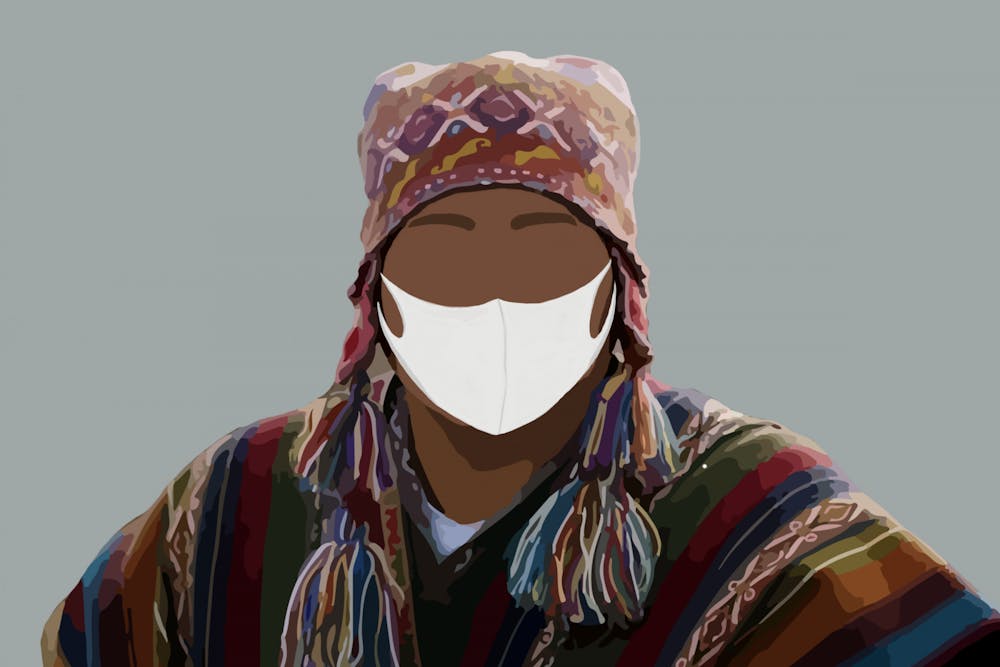Just a week ago, President Trump tested positive for COVID–19. Within days of his diagnosis, he was rushed to the hospital to receive a dosage of an antibody cocktail meant to fend off the virus. Afterwards, he drove by his supporters and waved at them from the backseat of his car as the virus still lived in his system.
Meanwhile indigenous tribes in America have been suffering severe financial losses, and are experiencing one of the highest rates of COVID cases in the country as a population.
On April 30, around the time of the first major COVID case peaks throughout the U.S., the Navajo Nation had the third highest per capita rate of positive tests. Compared to the general populace, Native people have also lacked access to testing kits in certain cases. This is an extremely significant issue, for without tests, it can be difficult to track the spread of the virus—let alone treat it. Many people who come down with the virus can be asymptomatic, and can unintentionally spread it to other more susceptible members of the tribe.
Even so, the federal government hasn’t done much to help the Native communities. Despite being one of the most vulnerable areas due to high poverty rates and underlying conditions, the government was pretty slow to help the Native communities back in May. Therefore, tribes have had to take measures of their own accord, and have made rules to protect themselves from the deadly consequences of the virus. Some tribes have even set strict curfews and have required people stay home.
Indigenous peoples have also suffered some of the highest rates of infection and hospitalization. Compared to white people, they have 2.8 times as many cases, 5.3 times as many hospitalizations, and 1.4 times as many deaths.
On top of all of that, many tribes are facing severe economic hardships as plenty depend on profits from tourism, including casinos and resorts, which are now closed due to COVID. Already, the median income for Native households is almost a third less than what it is for Americans overall.
History has taught that Indigenous communities have always suffered at the hands of those in charge of the United States. When colonizers first settled in the Northeast, they brought deadly doses of smallpox with them. The disease ravaged the indigenous communities, leaving behind an imprint of trauma that the government still neglects to properly address. Despite the centuries that have passed, studies have shown forms of intergenerational trauma within the communities—and this makes COVID seem dauntingly like the repetition of this dark history. Indigenous communities have continuously been shoved aside, massacred, and disrespected on land stolen from them.
President Trump’s reckless attitude to the virus is unjustified as so many people do suffer, but are simply not heard from during this time. Viruses do not affect all people equally; while Trump and others who live comfortably in the top tax bracket can get by and afford to be hospitalized, many people do not have the same luxuries. The majority of Americans are even lucky to get access to a test for the virus, and many delay care in hopes of preventing a steep medical bill.
Meanwhile on many college campuses, students have the advantage of being able to constantly get checked for COVID-19 and get tested at least once a week without having to pay anything. Results come in quickly, sometimes as soon as within 12 hours. This process is frictionless, providing immediate clarity about know whether or not they need to be careful about who they're around, and if they can visit their families between weeks of online class. This creates a false version of the coronavirus' reality: Not everyone has the means to get tested or to quarantine.
So while ignorant Americans—ranging from suburban mothers to political leaders—are complaining about wearing masks in grocery stores, Indigenous people are suffering under the combined effects of economic hardship and increased vulnerability for COVID–19. America can’t forget the struggles of these minority groups and how they are facing the brunt of this virus, even though they’re not as highlighted in the news.
Resources for where to help can be found here.







